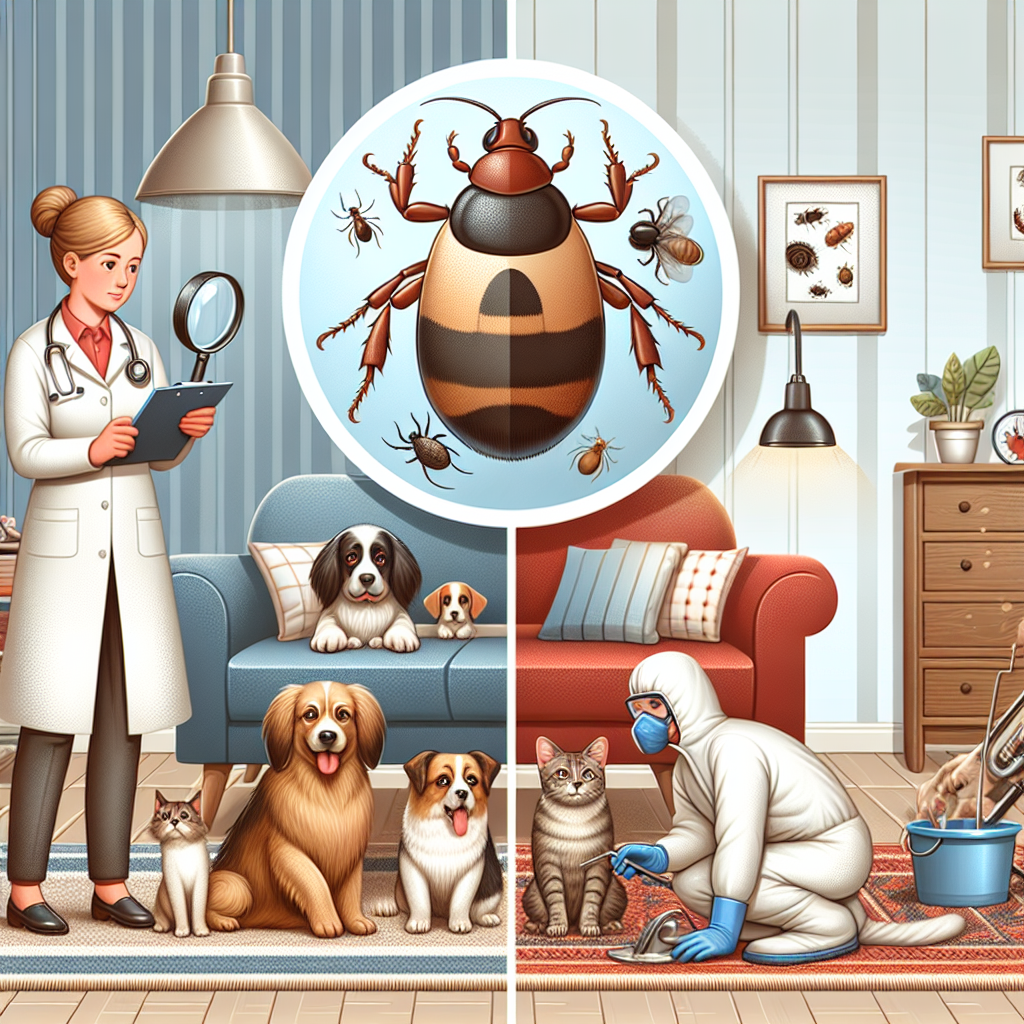Fleas and ticks are more than just a nuisance for pets; they can pose serious health risks to both animals and humans. If you’re a pet owner, understanding the treatments available for these pesky parasites is essential. This guide aims to provide you with a comprehensive overview of flea and tick treatments for your pets and home, helping you make informed decisions to keep your furry friends safe and comfortable.
The Importance of Flea and Tick Control
Parasites like fleas and ticks thrive in warm, humid environments, making them a significant concern for pet owners. Understanding their life cycles and how they affect your pets—and your home—can empower you to take effective measures against them.
Health Risks Posed by Fleas and Ticks
Fleas can cause severe skin allergies, anemia, and flea-borne diseases. Ticks, on the other hand, are known carriers of Lyme disease, Rocky Mountain spotted fever, and other life-threatening illnesses. It’s crucial to address infestations promptly to protect the health and well-being of your pets and family members.
Types of Flea and Tick Treatments for Pets
1. Topical Treatments
Topical treatments, often referred to as spot-on treatments, are a popular choice for pet owners. These solutions are applied directly to the skin and are effective in killing fleas and ticks on contact. Brands like Frontline and Advantage offer solutions that last from a few weeks to a month.
2. Oral Medications
Oral medications are another effective option, working from the inside out to kill fleas and ticks. Some are designed to prevent infestations by creating an inhospitable environment for these pests, while others kill existing parasites. Medications like Comfortis and NexGard are well-regarded among pet owners.
3. Collars
Flea and tick collars provide a continuous means of protection. They release active ingredients that repel and kill fleas and ticks over an extended period. Seresto collars are a favored option, providing up to eight months of protection.
4. Shampoos and Sprays
Flea and tick shampoos can help remove pests from your pet’s fur while also soothing their skin. Sprays can be used on both pets and around the home to kill fleas and ticks on contact. While these options may require more frequent reapplication, they can be useful as part of a broader control strategy.
Environmentally-Friendly Options
If you prefer a more natural approach, there are various environmentally-friendly treatments. Essential oils like peppermint, lavender, and cedarwood can repel fleas and ticks when used properly. Always consult with your veterinarian before trying these natural remedies, as some can be harmful to pets.
Treating Your Home
It’s important to remember that treatments need to extend beyond your pets; your home may also be hosting these parasites. Here are key steps to take in treating your home:
1. Vacuuming
Regular vacuuming can significantly reduce flea and tick populations. Be sure to focus on areas where your pets spend time and consider disposing of the vacuum bag or emptying the canister outdoors.
2. Washing Bedding
Wash your pet’s bedding, blankets, and any fabrics they frequently come into contact with in hot water. This will help eliminate any eggs, larvae, or adult fleas and ticks.
3. Professional Pest Control
If you’re facing a severe infestation, it might be worthwhile to consult a professional pest control service. They can provide targeted treatments that ensure your home is free from these parasites.
Preventative Measures
Prevention is integral to managing flea and tick problems. Here are some practical tips to minimize risks:
1. Regularly Groom Your Pets
Regular grooming sessions can help you spot and remove fleas and ticks before they become a bigger issue. Use a fine-toothed comb specifically designed for this purpose, particularly in warmer months.
2. Maintain Your Yard
Keeping your outdoor space well-maintained can deter fleas and ticks. Regular mowing and the removal of debris can reduce potential habitats for these pests.
3. Year-Round Treatment
Consider using interval-based treatments year-round, even in the colder months when fleas and ticks are less active. This proactive approach can prevent infestations before they start.
Conclusion
Fleas and ticks can be a frustrating challenge for pet owners, but with the right understanding and treatments, you can effectively manage and prevent infestations. Whether you choose topical treatments, oral medications, or natural remedies, it’s essential to consult with your veterinarian to determine the best course of action for your pet’s needs. Additionally, maintaining a clean home and yard can significantly reduce the chances of these parasites invading your space. Together, let’s create a safe and comfortable environment for our beloved furry friends.
Call to Action
Taking proactive steps to protect your pets from fleas and ticks is crucial. For personalized advice tailored to your pet’s specific needs, don’t hesitate to reach out to your local veterinarian. Care for your animals, and they’ll return the love tenfold!


